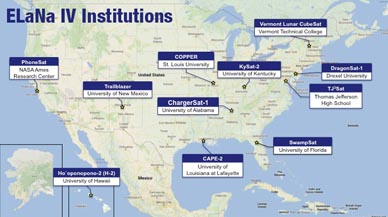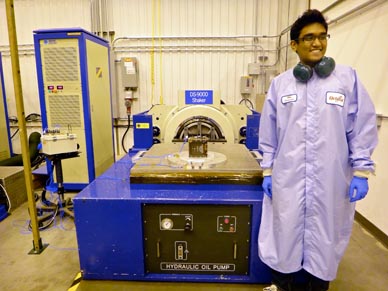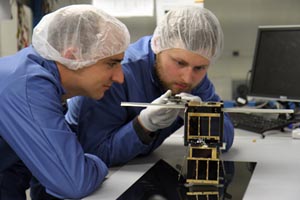NASA Helps Launch Student-Built Satellites
By Space Coast Daily // November 21, 2013
PhoneSat Part of CubeSat Launch Initiative
NASA.gov – Nine university teams and one high school team will experience on Tuesday a feat that few outside the aerospace industry will ever realize: watching the nanosatellites, or cubesats, that they designed and built launch into space.

An addition to the NASA PhoneSat technology demonstration will also be aboard.
More than 300 students took part in this fourth installment of NASA’s cubesat Launch Initiative and it’s Educational Launch of Nanosatellite (ELaNa) Missions, which enables students, teachers and faculty to obtain hands-on flight hardware development experience.
This launch marks the first time NASA will launch a cubesat developed by students not yet in college – high school students from Thomas Jefferson High School for Science and Technology of Alexandria, Va.

Since 2010, the cubesat Launch Initiative has issued four announcements of opportunity and selected more than 90 cubesats from public and private institutions and government labs to launch as auxiliary payloads aboard commercial rockets. The cube-shaped satellites are approximately four inches long per unit, have a volume of about one quart and weigh less than three pounds. Cubesat research addresses science, exploration, technology development, education or operations.
PHONESAT AS PART OF CUBESAT LAUNCH INITIATIVE
In many cases, student teams are able to connect with mentors in the aerospace industry to help them develop their cubesats. Twyman Clements of Kentucky Space LLC, is mentor to the ELaNa IV KySat-2 team comprising students from the University of Kentucky and Morehead State University.

“There’s an enormous sense of accomplishment,” he says.
“Not just in designing with a great team but also encouraging the students to take the initiative and learn their areas of strength to become better students – and much more importantly, better professionals. There’s nothing like an impending satellite launch to motivate you.”
Success of the ELaNa missions has also helped universities to secure funding for future projects.

According to Craig Kief, Deputy Director of the Configurable Space Microsystems Innovations & Applications Center (COSMIAC), “ELaNa has proven to be a game-changing endeavor.
It has allowed us to be able to show past performance in the areas of nanosatellite development. This achievement has easily resulted in over $1M in future research projects for the University of New Mexico.”
The 11 ELaNa IV cubesats are scheduled to launch aboard the Orbital Sciences Corporation’s Minotaur-1 rocket on Nov. 19, between 7:30-9:30 p.m. EST.
Over the next few months, they will receive data from their satellites in space. As part of their agreement with NASA, they will provide NASA a report on their outcomes and scientific findings.












